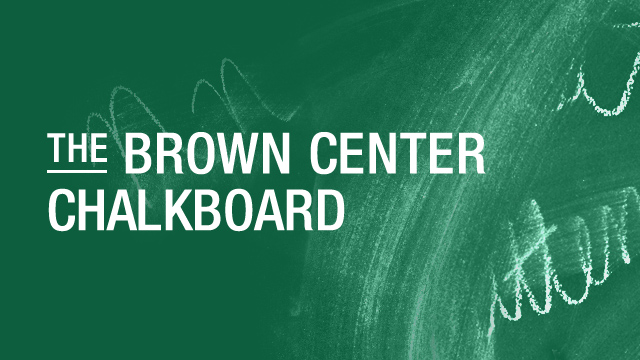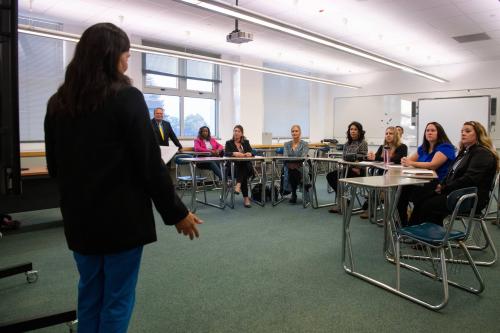Since 2009, nearly every U.S. state has adopted specific standards and teaching frameworks for literacy and math. Yet, despite these efforts, the implementation of these standards in classrooms has often fallen short. As I reflect on my six decades in education policy—including 12 years as president of the California State Board of Education—I’ve come to believe that one of the most persistent challenges in American education is the gap between state-level policy and effective classroom practice.
In a recent report I authored for the Learning Policy Institute, I examined the long, winding, and often perilous journey of state curriculum standards and found that even well-designed policies frequently fail to translate into meaningful classroom implementation. Teachers and principals emerged as critical links in the chain between the state capitol and the classroom. Yet, I found that state strategies for teacher and principal improvement are often superficial, fragmented, underfunded, and overly reliant on external vendors who are not embedded in district operations.
That research led me to a deeper question: Why do most state policies for teacher development end when a teacher is certified and inducted into the profession? This approach is no longer sufficient given the challenges facing teachers today.
To ensure that all students benefit from high-quality instruction aligned with state standards, we must rethink the role of the state in supporting educators throughout their careers. This means building a coherent, long-term system of professional learning that spans the entire teaching lifecycle—from early career to veteran educators. It also means aligning profession development initiatives with state curriculum frameworks, leveraging research on what works, and creating the infrastructure to support continuous improvements at scale.
Rethinking state responsibility for ongoing educator support
Forty states use the state department of education to certify teachers and 10 states use a variety of independent state entities. However, once educators are certified and complete their induction, state involvement in teachers’ professional growth either tapers off or ends abruptly. Overseeing professional growth typically then falls to districts and/or schools, where approaches vary widely. This leaves a critical gap in the state’s oversight of educators’ career-long development.
To address this, state legislation should expand the mandate of these state certification bodies—or create new ones—to support professional learning across the entire career continuum. A logical starting point would be to extend support for early-career teachers, as beginning teachers are often searching for effective teaching practices on their own, and a supply of high-quality, vetted resources from the state could meet their needs. States could gradually scale up to include support for experienced practitioners. Crucially, this expanded role must be tightly aligned with state curriculum content standards and frameworks, rather than left to the sole discretion of local districts.
Such a shift would bring coherence and vision to professional development efforts, reduce reliance on one-off initiatives, and replace scattered categorical programs with a more strategic, sustained approach. The Mississippi Department of Education offers a promising example through its state-led literacy initiative. With resources for educators, administrators, and parents all designed to support literacy efforts from kindergarten through grade 12, the initiative demonstrates how coordinated, standards-aligned efforts can support educators more effectively.
I have often thought of directing classroom practice from the state capital as trying to coax a turtle toward a goal. Do this, and you’ll likely walk away from the experience either elated or frustrated, as sometimes turtles will do what you want them to, but more often they’re unpredictable and will wander off course with little apparent regard for how you might be nudging them. Too often, state policies often operate at the surface level—affecting the turtle’s shell—while the complex, interdependent work of operating schools and teaching students happens beneath the shell. Here, district leaders and administrators represent the turtle’s body in the metaphor, responding to state nudges while managing their own complex responsibilities. But the real objective is to direct movement in the turtle’s legs—school sites and classrooms—where policy must ultimately reach to influence teachers’ subject matter knowledge and pedagogy. That’s much more difficult.
My experience in California showed that deferring too heavily to local districts led to isolated pockets of success, but more often resulted in widespread superficial implementation.
A framework for improvement
Research from the Learning Policy Institute has identified key components of effective professional development for in-service teachers. Drawing from 35 high-quality studies conducted over three decades, the research highlights seven core features that consistently lead to improved teaching and learning outcomes:
- Focus on curriculum standards and content
- Incorporation of active learning
- Support for teacher collaboration
- Use of models of effective teaching practice
- Access to coaching and expert support
- Opportunities for feedback and reflection
- Sustained duration over time
States should adopt these evidence-based features and provide comprehensive support for their implementation. The first step is to develop a state-level strategic plan and road map that outlines how professional learning will be delivered, scaled, and sustained. This includes identifying and vetting high-quality vendors, curriculum developers, university partners, and other providers—ensuring that professional development is aligned with state standards and not left to chance or local districts’ preferences.
Regional agencies, such as county offices of education, exist in most states and can play a crucial role, especially in supporting rural districts. Additionally, a robust data system is needed to track professional learning over time. This system should assign each teacher and coach a unique, anonymous identifier, enabling states to monitor participation, evaluate impact, and ensure continuity across a teacher’s career.
Implementing career professional development frameworks
Current research on teacher learning is bifurcated. One body of research focuses on teacher preparation and induction, while another examines small-scale professional development efforts for in-service teachers. However, there is a significant gap in understanding how to connect these two prongs into a coherent, career-long continuum of professional learning.
This lack of integration hinders the development of effective state policy. For example, while many countries have found ways to embed regular professional development into teachers’ weekly schedules, the U.S. lacks models and supporting research on how to do this at scale. Strategies and tactics will necessarily differ between early elementary and high school settings, but the need for structured, ongoing learning is universal. Digital delivery methods could help reduce costs and expand access, making them a valuable component of both teacher preparation and ongoing professional learning.
A crucial question is how to create meaningful incentives and recognition for participation in high-quality professional development programs. Most teachers currently engage in workshops or professional learning communities designed by their districts—yet research suggests these experiences yield paltry results.
Some states have experimented with financial incentives for professional learning credentials. For example, California offers a $10,000 salary increase for teachers who earn certification from the National Board for Professional Teaching Standards (NBPTS). While most studies suggest a positive correlation between NBPTS certification and student achievement, the evidence also suggests the credential is picking up on teachers’ differing abilities and not skills developed through the process of becoming certified. The NBPTS certification process is also rigorous, requiring completion of four components—including portfolios and a test—over a period of up to five years. While the process emphasizes subject matter knowledge and instructional strategies, its intensity limits widespread adoption as a tool of ongoing professional development.
More common are salary increases tied to the completion of graduate coursework. However, these incentives are often disconnected from state curriculum standards, school contexts, or student outcomes. Coursework is typically selected by the teacher, measured by seat time and passing grades, and may not align with schools’ instructional needs. Researchers have long questioned the wisdom of such diffuse and uncoordinated incentives for the teacher workforce.
Micro-credentialing as a potential policy approach
In recent years, several states have begun experimenting with micro-credentials— short, competency-based recognitions that allow educators to demonstrate mastery in specific instructional areas, such as teaching literacy. These credentials are designed to be more targeted and flexible than traditional professional development or graduate coursework.
The National Education Association, for example, offers over 175 micro-credentials spanning dozens of topics. However, many of these are tailored to individual teacher interests rather than aligned with state curriculum frameworks or instructional priorities. While some districts offer salary increases or stipends for completing specific micro-credential pathways—particularly in areas like reading instruction—there is little research or regulation to ensure the quality, effectiveness, or impact of these programs. Maryland stands out as a promising example; the state incentivizes K-12 teachers for completing micro-credentials in evidence-based reading instruction and has taken steps to vet the most effective designs.
Despite their potential, micro-credentials remain an emerging and unevenly implemented strategy. For them to become a meaningful part of a statewide professional development system, states will need to establish clear standards, align credentials with curriculum frameworks, and build systems for evaluating their impact. Without such infrastructure, micro-credentials risk becoming another fragmented initiative rather than a transformative tool for educator growth.
Thoughts for the future
The pandemic and the resulting decline in test scores have intensified the urgency to reform and strengthen K-12 public education. While I continue to support strong state accountability systems, it is increasingly clear that accountability alone is not enough. Current state policies underinvest in the educator capacity needed to deliver high-quality instruction across the full range of subjects contained in state standards.
Changing this imbalance will enhance effective accountability, and it must include a more centralized state role for teacher development. If we are serious about improving student outcomes, we must be equally serious about supporting the educators who make those outcomes possible.
The Brookings Institution is committed to quality, independence, and impact.
We are supported by a diverse array of funders. In line with our values and policies, each Brookings publication represents the sole views of its author(s).








